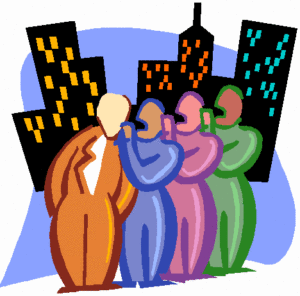 Watering the roots – A flexible development plan
Watering the roots – A flexible development plan
“… always ahead …”
 Aspiration Tree’s development Plan presented by AK around 1998-1999 as part activities during two successive Graduate Courses at City University pf New York (CUNY) Queens College: “Digital Libraries” and “Libraries and the Internet”
Aspiration Tree’s development Plan presented by AK around 1998-1999 as part activities during two successive Graduate Courses at City University pf New York (CUNY) Queens College: “Digital Libraries” and “Libraries and the Internet”
A. Introduction Aspiration-Tree.(“com” became “net”)
The concept of Aspiration Tree is Generic in that it might be applied to communities in various locations.
In a healthy community, information identification and delivery systems as well as forums for participation and governance may take many forms. AT seeks to point to collections, contents and services, which help sustain the community.
A number of activities are highlighted.
Unique Information Sources within the community
Related information of potential interest to the community [Links]
Participation and Governance.
Resources required to sustain AT
B. Highlighting Unique Information Sources within the community
Aspiration Tree attempts to present the unique information sources and services within the community. Five areas have been considered. The first two, Content and Community have had some extended thought. Organizational Structure, Retrieval features and searching, browsing and navigation structure will require much “hands-on” testing and evaluating to see what works and can be sustained. Digital access to information from various locations any time of day is supported.
- Content.
What is the content of the Digital Library and what other collections are available? There are a number of homogeneous databases including:
- Meeting Places and Spaces
- Governance and participation related collection
- History of the Community including information products and activities of members
- Internal Documentation from formal and non-Formal associations
- Memoirs s of the community and predecessors
2. Community of Users. – Who will benefit?
 Those who will benefit from the Digital collection will include the primary members. For example a UN community AT would benefit, Delegates, staff and Non-Governmental Organizations representatives.
Those who will benefit from the Digital collection will include the primary members. For example a UN community AT would benefit, Delegates, staff and Non-Governmental Organizations representatives.
However, in addition to the primary intended active participants the other beneficiaries will include:

Scholars – who will have more direct access to source material from the community and the individuals who created this material,

Students and school children – who will be able to use some of the collections for their studies and may obtain ideas for special projects

General Public – who will be able to observe the processes and use the information, sources available.
3. Organizational Structure of the Collections.
In order to increase access to the collection number different approaches to organization, classification and cataloguing will be explored. The degree of development depends on use and the volunteer resources available. Some of he approaches taken:
- Chronological Register: All items are registered with a minimum of Short title, date of creation and author. Those who later review information identified in the register are encouraged to add fuller descriptions.
- Major Theme: all information registered is assigned to at least one of the main themes identified to be of interest to the community. The theme list was developed based on the experience of the members and is maintained by the AT Governance Secretariat. E.g. News, Education, Cultural etc.
- Meta Tags for web pages: the use of Web tags for web pages is encouraged. Due to the volunteer nature of this effort completeness will depend on conformance.
- Classification Schemes. The database descriptions allow entering descriptors form various systems. E.g. USA Library of Congress information, Coding from the Dewey Decimal system. A conformance indicator is planned to indicate the percentage of the items in the collection registered using either of these methods. Additional methods can be considered.
4. Retrieval system.
In addition to the items listed in par 3. There are also some visual clues such as pictures of possible meeting, eating, or quite meditating spaces to indicate the physical locations. Repeating icons or thumbnail pictures may be developed to represents groups having accessible to restricted environments.
5. Search.
The most used feature for new users is the full text searching system. All of the information in the collections is available via Full text searching. However using the categories identified in par 3 provides better results. Some users prefer the site map to get around the whole collection.
Related information of potential interest to the community [Links]
A number of information sources are available to most communities. The AT does not want to duplicate efforts. Instead it will attempt to point to supplemental information and community participation links. An example of Planned links for an international AT for the UN community is:
Planed links and of interest to members of the AT community:
UN Secretariat, Agencies, Programs and Funds
UN related and WWW sites listing
Housing and Local Governmental sites and services in the Host City
Libraries, Educational and Cultural Institutions
Distance learning sites and opportunities
Weather and Travel advisories
Media sites known for International coverage as well as samples of AT community publications: “Secretariat News”, “UNICEF News”, UN Staff Report etc.
Participation and Governance.
This sample Aspiration Tree is planned for members of the UN community. However it will be open for observation by others.
Participation will be enhanced by a number of discussion Groups. A list of Frequent Questions [FAQ] sorted by main themes will be available. These will be especially useful or new members or observers
During the first two years it will be up to the initiators to make operational decisions and to summarize the process to encourage the sustainability of the project.
Resources required to sustain AT
The type and amount of resources required to sustain the aspiration tree will be better known after the first two years of operation. The site will be maintained by the initiators until such time as more formal governance and financing structure is established.
A “guestimate” of potential number of participants table below.
Participants
2000
2003
2006
Country Delegates and Mission staff
50
300
UN Staff including NY Programmes Agencies and Funds
100
800
NGO Representatives and Alternates
25
75
Accredited Media
25
75
Public Observers including Scholars, School Children General Public
100
1000
Any one who visits the site once and registered will be counted. Non-Registration observations will also be supported for most AT forums
Table. Projected Growth of AT Participants
It is envisaged that to maintain the site will require significant growth in resource allocation – voluntary or other. The site will be set up
